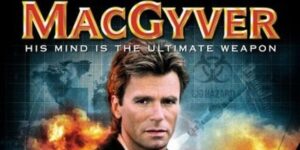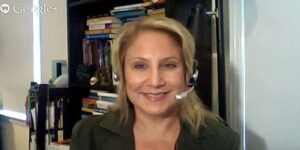
What Drives Innovation Management at Successful Companies?
In today’s fluid, fiercely competitive business environment, many organizations continuously strive to stay ahead of the curve. They know success requires an ongoing commitment to

In today’s fluid, fiercely competitive business environment, many organizations continuously strive to stay ahead of the curve. They know success requires an ongoing commitment to

Music is a great unifier. In our private lives, shared tunes always have a way of bringing people together to sing, dance, laugh and socialize.

We’re learning that the term social distancing may not be precisely right — physical distancing is more like it. Socially, we’re finding all sorts of

Ed Catmull’s “Creativity, Inc.” offers effective strategies for leading creative teams. How can leaders use these to re-evaluate their own company dynamics?
Do you struggle to maintain concentration? Technology and its foreboding “nowhere to hide” mindset has certainly not helped. Thankfully, there are ways we can limit
One of the more serious problems in society today is spacial separation; we are way too close to one another. We find ourselves almost in
“When you pay attention to boredom, it gets unbelievably interesting.” —John Kabat-Zinn Boredom is something most of us try to avoid at all costs, and thanks to
The current job market demands creative thinkers. A recent study titled “Tomorrow’s Most Wanted” (conducted by Global Learning Institute Hyper Island and Edelman in Stockholm, Sweden) suggests
There are significant challenges facing innovation in any organization. People are taught to be cautious and to make “informed” decisions based on thorough and rigorous

Today’s global marketplace is fiercely competitive. But smart companies recognize their primary business advantage comes from within

One of the year’s best business books sparks insight into an often overlooked source of innovation

Teamwork gets a lot of buzz — but teams often fall short. What can we do to crack the collaboration code? This idea is winning fans

Are you a geek? Your job prospects may be stronger than you think. Here are 5 ways your uniqueness can propel your career

Are employers unintentionally losing competitive steam by overlooking talent that lives at the margins? Could a more inclusive world of work boost innovation?

How can companies retain their most innovative employees? And how can those smart minds succeed? It starts by creating value for others

Why and how should established businesses develop a culture of entrepreneurship? That’s the focus this week at #TChat events with Bob Burg…

Do accepted brainstorming practices work as well as we think? How can teams do a better job of sparking creative ideas in today’s workplace?

Evidence shows that we don’t need to be super-human to be ingenious. We just have to be willing to try. Here’s what the TalentCulture community thinks…

Employers are on a mission to reignite passion and productivity in the workplace. How can they make that happen with existing talent?

Does your organization have extraordinary contributors who need to be led in a special way? How can you motivate them to perform at their peak, for the benefit of all?

Is “vacation” a vanishing breed? Even when we’re able to get away from work, our connections follow us. How can we disconnect and de-stress in a world that’s always “on”?

When designing an organizational workspace, it’s essential to think from the “inside” out. Why? Thoughts from an employee recognition expert…

Work is changing — and your work environment needs to keep up. If you’re looking to boost productivity or performance, take a look around you, and consider the possibilities…

Today’s educational system falls far short of the mark in developing tomorrow’s leaders. What can talent-minded professionals do to bridge the gap? Social learning advocate, Angela Maiers, knows…
What’s the recipe for more creative, satisfying solutions to challenges in life and in business? Try a dash of collaboration…